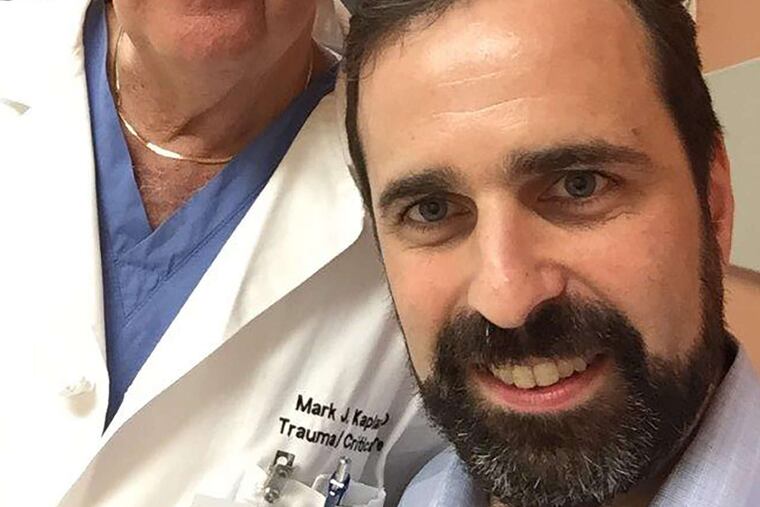Medical Mystery: What made Mayor Kenney's aide so sick?
After an active Sunday spent with his family, Bob Murken started feeling lousy. He assumed he was coming down with the flu that his son had a few weeks earlier. He went to bed, shivering with chills, figuring a night's sleep would help.

After an active Sunday spent with his family, Bob Murken started feeling lousy. He assumed he was coming down with the flu that his son had a few weeks earlier. He went to bed, shivering with chills, figuring a night's sleep would help.
But in the morning, he felt worse. He was achy, weak, and his fever was climbing. He took Tylenol, drank water to stay hydrated and hoped his illness would be short-lived. Murken, director of legislative affairs for Mayor Kenney, was a key part of the soda tax initiative and hearings were set to begin before City Council.
When his fever reached 104, Murken called his family doctor. After he described his symptoms, she asked if there was anything else bothering him. In the interest of full disclosure - although he assumed it was just a muscle pull from his usual lengthy bike ride - Murken said he had a pain in his leg. His doctor told him to rest, take it easy and come in the next day.
By the time Murken arrived for his appointment, the pain in his leg had become severe. The examination and an ultrasound were inconclusive. The doctor put Murken on an antibiotic - and told him to draw a line around the slight swelling and redness in his leg with a Sharpie. When she called the next day, he told her the redness had gone beyond that line. She was perplexed: The antibiotics should have prevented an infection from spreading. She advised him to go the hospital.
The emergency physicians at Einstein Medical Center suspected he had an infection of the testicle and decided to admit him; they also called me to take a look at him. I was on acute surgery call that night.
The picture was puzzling. He was an otherwise healthy 41-year-old man with no systemic illnesses that would have impacted his immune system. He had no wounds that could have become infected. The area on the leg that was causing him so much pain wasn't very red or inflamed; the skin didn't look right but his pain was out of proportion to the physical presentation. Something was weird.
Solution:
When the lab tests came back, they confirmed what I'd already begun to suspect.
The sodium level in Murken's blood was low. That finding, and his excruciating pain, convinced me he had necrotizing fasciitis - or flesh-eating disease. It often goes undiagnosed because the symptoms are vague and it doesn't show on a diagnostic scan. About 25 percent of victims die; in severe cases, they die within 18 hours.
The only way to diagnose it is with a high suspicion index. The key is recognizing it as a surgical emergency; a lot of patients die from systemic complications. They go into renal and respiratory failure because of toxins that get dumped into their system.
When I got the lab results, I immediately called to arrange for emergency surgery. This was a crisis.
By the time I saw Murken, he'd been ill for a few days. He was swollen, which was evidence that his kidneys had begun to fail. It was clear to me that he was 24 hours away from organ failure, amputation, or death. We had to immediately remove the dead, infected tissue to arrest the rapidly spreading disease.
After surgery, Murken was taken to the intensive care unit. He had five more surgeries to debride more tissue. The disease had started to destroy his femoral artery, which I repaired and covered with a muscle flap. He had a skin graft to cover the wound. After 13 days in the hospital, he went home.
Flesh-eating disease is rare, but I had seen it before. It's more common among patients who are older and sick, often with diabetes, heart failure or another chronic ailment. And often, there's a source of infection: a cut, a scrape, a pimple, some point of access.
In Murken's case, I think he may have had a small, subclinical break in the skin of his thigh, where it was rubbing against his bike seat.
From the beginning, Murken was concerned about being able to get back on his bike.
I told him, let's save your leg first - and your life. We did both.
Mark Kaplan, M.D. is associate chairman of the Trauma Program-Department of Surgery at Einstein Medical Center Philadelphia.